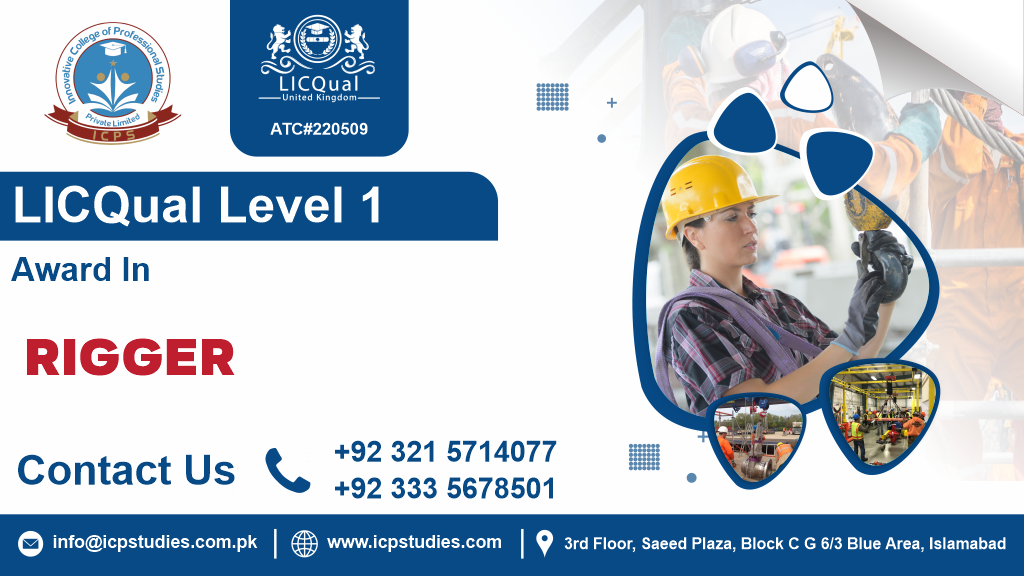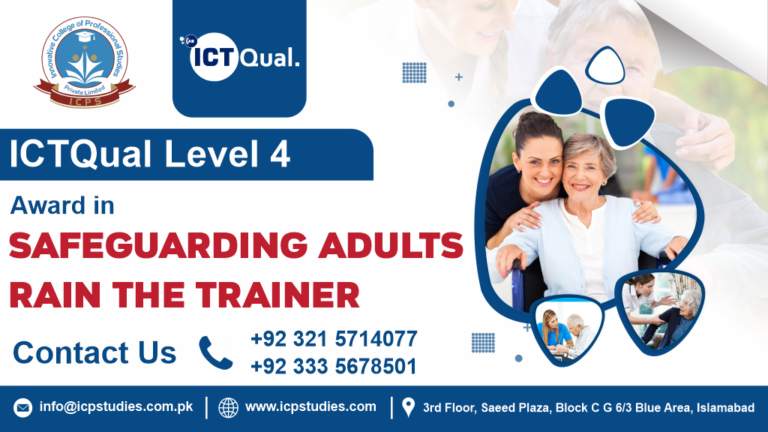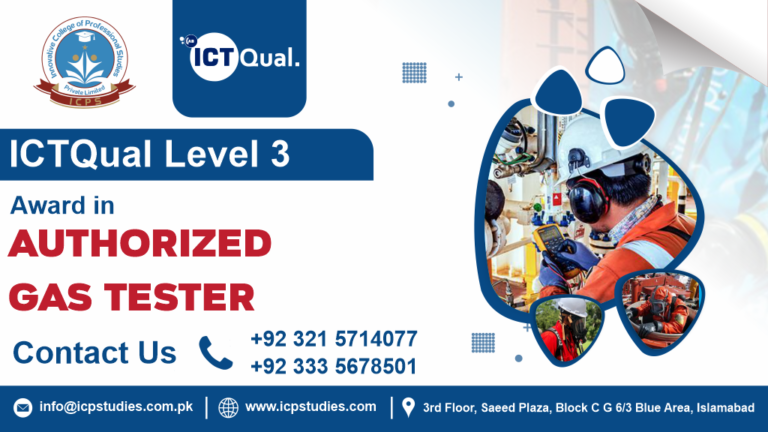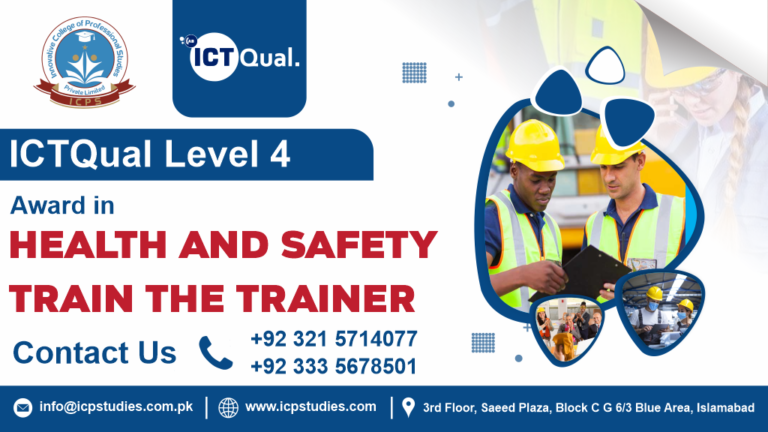In industries where heavy lifting is a routine task, the role of a rigger is indispensable. Whether it’s hoisting equipment on construction sites, setting up stage rigging for events, or handling loads in manufacturing facilities, riggers play a crucial role in ensuring the safe and efficient movement of objects. If you’re looking to kickstart a career in rigging or enhance your existing skills, the LICQual Level 1 Award in Rigger offers an excellent opportunity to do just that.
The LICQual Level 1 Award in Rigger is a comprehensive training program designed to provide participants with the fundamental knowledge and skills required to work as a rigger in various industries. From understanding rigging equipment to mastering safe lifting techniques, this course covers all aspects essential for successful rigging operations.
LICQual Level 1 Award in Rigger provides participants with the essential knowledge, skills, and certification needed to excel in the dynamic and demanding field of rigging. Whether you’re aiming to embark on a new career path or enhance your existing skills, this course equips you with the tools and credentials to succeed as a rigger in today’s industries.
All About LICQual In Level 1 Award in Rigger
Course Overview
The “LICQual Level 1 Award in Rigger” is a specialized training program designed to provide individuals with the foundational knowledge and skills necessary to work effectively as riggers in various industries. Rigging involves the process of preparing and moving heavy objects or loads using various equipment and techniques. This award program aims to equip participants with the essential competencies required to conduct rigging operations safely, efficiently, and in compliance with industry standards and regulations.
LICQual Level 1 Award in Rigger provides participants with the foundational knowledge, skills, and certification needed to embark on a career in rigging or enhance their existing skills in rigging operations. By completing this award program, individuals can demonstrate their competency in conducting rigging operations safely and effectively, contributing to the safety and efficiency of operations in various industries.
Study Units
Admission Criteria
Introduction to Fire Incident Investigation:
- Understand the principles and objectives of fire incident investigation.
- Identify the key components and stages of a fire incident investigation.
- Recognize the importance of preserving evidence and maintaining scene integrity.
- Explain the roles and responsibilities of individuals involved in fire incident investigation.
2. Introduction to Rigging:
- Define rigging and its importance in various industries.
- Identify common rigging tasks and their significance in construction, manufacturing, and other sectors.
- Understand basic rigging terminology and principles.
- Recognize the importance of safety and compliance in rigging operations.
3. Rigging Equipment and Tools:
- Identify and describe different types of rigging equipment and tools used in various industries.
- Understand the capabilities and limitations of each type of rigging equipment.
- Demonstrate proficiency in selecting and inspecting rigging equipment for specific tasks.
- Explain the proper use and maintenance of rigging tools and equipment.
4. Rigging Safety:
- Understand the importance of safety regulations, standards, and best practices in rigging operations.
- Identify common hazards and risks associated with rigging tasks.
- Demonstrate knowledge of risk assessment and hazard mitigation techniques in rigging operations.
- Explain the importance of personal protective equipment (PPE) and safe work practices in rigging safety.
5. Rigging Techniques:
- Demonstrate proficiency in rigging techniques, including knot tying, sling configurations, and load securement.
- Understand the principles of load distribution and weight estimation in rigging operations.
- Identify common rigging mistakes and errors and how to avoid them.
- Apply proper rigging techniques to ensure the safe and efficient movement of loads.
6. Communication and Teamwork:
- Understand the importance of effective communication and teamwork in rigging operations.
- Demonstrate the ability to communicate clearly with team members, supervisors, and other stakeholders during rigging tasks.
- Collaborate effectively with team members to plan and execute rigging operations safely and efficiently.
- Recognize the role of communication and teamwork in preventing accidents and promoting a positive safety culture in the workplace.
These learning outcomes ensure that participants in the course gain a comprehensive understanding of fire incident investigation, rigging principles, equipment, safety, techniques, and the importance of communication and teamwork in rigging operations.
Ideal Candidate
- Minimum Age: Participants must be at least 18 years old at the time of enrollment. This requirement ensures that individuals have the maturity and responsibility necessary to engage in rigging operations safely.
- Educational Background: While there are typically no strict educational prerequisites for this entry-level course, a basic level of literacy and numeracy may be beneficial for understanding course materials and instructions.
- Physical Fitness: Rigging operations often involve physical exertion, including lifting heavy objects and working at heights. Participants should be in good physical health and capable of performing tasks safely.
- Health and Safety Awareness: An awareness of health and safety principles and regulations, particularly those related to manual handling, working at heights, and equipment safety, is advantageous for participants undertaking rigging training.
- Basic Technical Understanding: A basic understanding of mechanical principles and equipment operation may be helpful for participants in grasping rigging concepts and procedures.
- Pre-Course Assessment: Some training providers may conduct a pre-course assessment to evaluate participants’ suitability for the course. This assessment may include basic knowledge quizzes, physical fitness tests, or interviews to assess participants’ readiness for rigging training.
- Safety Certification: Depending on the jurisdiction and industry requirements, participants may need to possess relevant safety certifications, such as working at heights certification or basic first aid training, before enrolling in the rigging course.
- Experience: While not always mandatory, prior experience in manual labor, construction, or related fields can be beneficial for participants undertaking rigging training. However, this course is designed to cater to individuals with varying levels of experience, including those new to the industry.
These entry requirements help ensure that participants have the necessary foundational knowledge, skills, and capabilities to engage effectively with the rigging course content and safely perform rigging operations in their respective industries.
Learning Outcomes
- Aspiring Rigging Professionals: Individuals who are interested in pursuing a career as riggers in industries such as construction, manufacturing, entertainment, logistics, oil and gas, and maritime sectors can benefit from this course. It provides them with the foundational knowledge and skills needed to start their careers in rigging.
- Entry-Level Workers: Individuals who are new to the workforce or transitioning into industries involving rigging operations can enroll in this course to gain essential skills and knowledge required for entry-level rigging positions. It serves as an excellent starting point for those seeking to enter the rigging industry.
- Experienced Workers Seeking Certification: Experienced workers who have been performing rigging tasks without formal training or certification can benefit from this course by obtaining formal recognition of their skills and knowledge. It allows them to enhance their credentials and advance their careers in rigging.
- Construction Workers: Construction workers involved in tasks such as lifting and moving heavy materials, erecting scaffolding, or installing structural components can enroll in this course to improve their rigging skills and safety awareness. It helps them perform their job duties more effectively and safely on construction sites.
- Manufacturing Personnel: Employees working in manufacturing facilities where rigging operations are common, such as loading and unloading materials, operating cranes, or moving machinery, can benefit from this course to ensure they have the necessary skills to conduct rigging operations safely and efficiently.
- Event and Entertainment Industry Professionals: Individuals working in the event and entertainment industry, including stagehands, rigging technicians, and production crew members, can enroll in this course to enhance their rigging skills and safety awareness. It prepares them for rigging tasks involved in setting up stages, lighting, audio, and other equipment for events and performances.
- Logistics and Transportation Workers: Workers involved in logistics, warehousing, and transportation operations where rigging tasks are integral, such as loading and unloading cargo, securing loads for transportation, or operating lifting equipment, can benefit from this course to ensure they can perform rigging operations safely and effectively.
In summary, the LICQual Level 1 Award in Rigger is suitable for individuals from various backgrounds and industries who wish to acquire the essential skills and certification needed to work as riggers. Whether you’re starting your career in rigging or seeking to advance your existing skills, this course provides a solid foundation for success in the rigging industry.
FAQs about LICQual In Level 1 Award in Rigger







